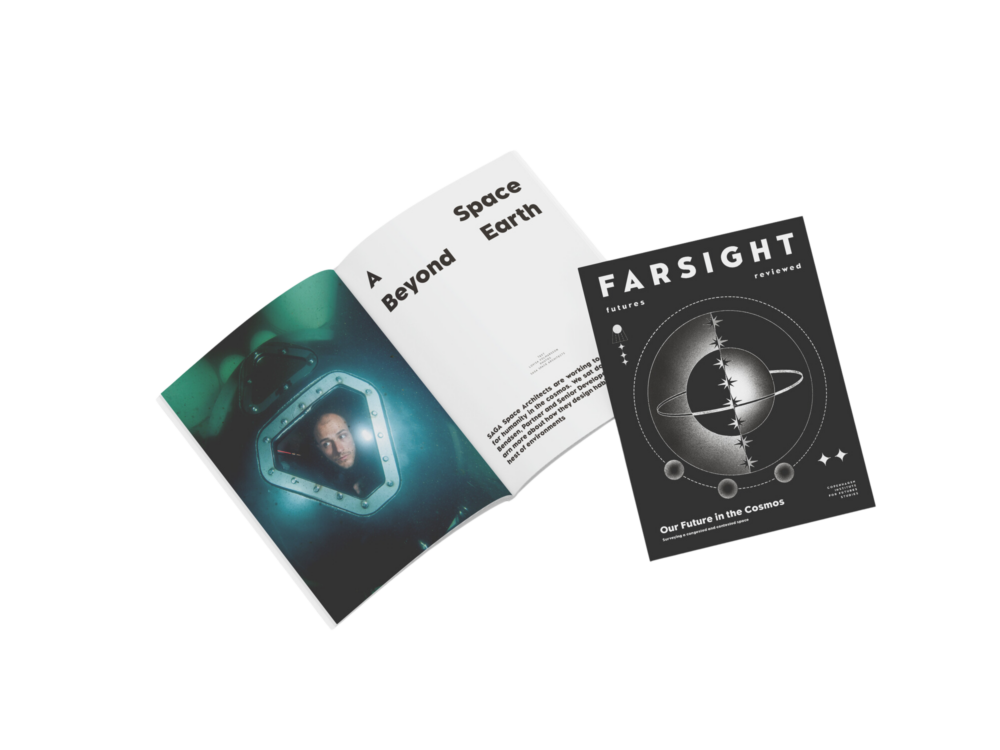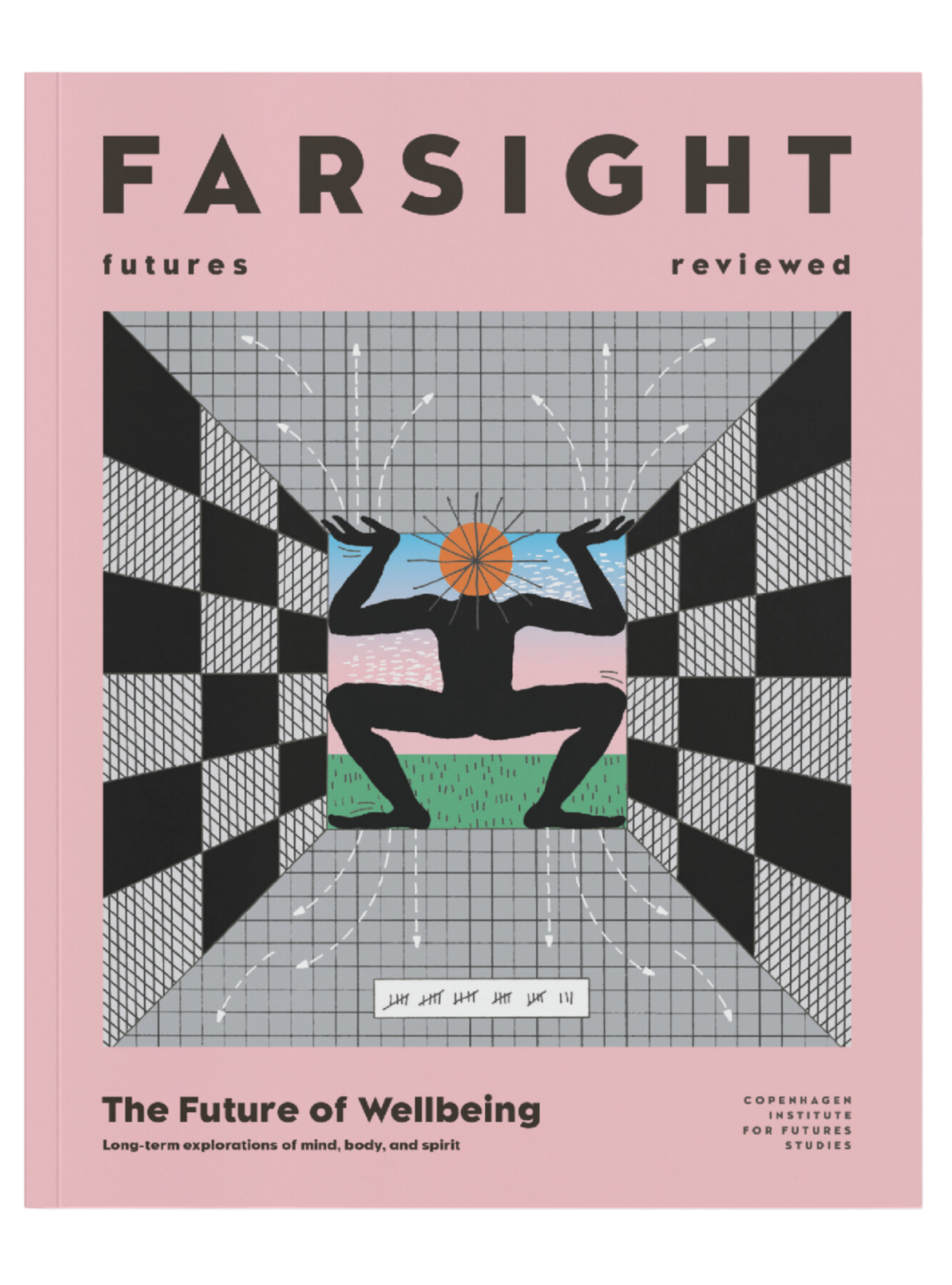
In turn, we use cookies to measure and obtain statistical data about the navigation of the users. You can configure and accept the use of the cookies, and modify your consent options, at any time.

Melina Shannon-DiPietro, Executive Director of MAD, envisions a future where sustainable, delicious food becomes a necessity rather than a luxury.
Illustration: Katrine Bælum
With food production being a major global driver of climate change and biodiversity loss, a transformation in how we cultivate, prepare, and consume food is needed. Hospitality is sure to play a key role in this change, yet the industry grapples with relentless and occasionally unfair working conditions, leaving little opportunity for contemplation and foresight. The transition to more socially and environmentally sustainable food systems will be neither easy nor quick. But exactly how difficult will it be, and on what timeframe can we expect meaningful change?
In this interview, Melina Shannon-DiPietro shares her outlook on the future. She is the Executive Director of MAD (Danish for “food”), a Copenhagen- based organisation that works towards transforming food systems and the hospitality sector by highlighting the connection between food and broader issues like climate change, biodiversity loss, and equitable work practices.

Broaden your horizons with a Futures Membership. Stay updated on key trends and developments through receiving quarterly issues of FARSIGHT, live Futures Seminars with futurists, training, and discounts on our courses.
become a futures memberWith their headquarters situated in Copenhagen, MAD’s global influence extends far beyond its physical location. The organisation, which was founded in 2011 by René Redzepi of Noma, reaches a wide range of actors in the world of food – from major growers and fast-food chains to smaller fine dining restaurants. With Shannon-DiPietro at the helm, they work to promote their vision of a future where delicious and healthy food prepared in a sustainable way is thought of as a necessity rather than a luxury.
Melina, you’ve said before that you believe a revolution in our food systems is needed to both improve working conditions, bring them in tune with climate goals, and to stop biodiversity loss. What does such a revolution look like?
It would need to encompass change on all levels. We have a food system that’s enormously productive because it arose as an answer to a question we had fifty years ago, which was how to feed a rapidly growing world population. Today’s question is not how many calories we can produce globally – the answer here is plenty – but how we distribute them, and how we make sure they’re delicious, healthy, and sustainable.
People who work in restaurants are under so much pressure to think about what can happen today. We’re trying to instil a culture in the world of hospitality where the service these people are providing is not just about taking care of whoever is eating at the dining table, but everyone and everything else involved in getting the food to their plates as well. This also includes making sure people’s work is fairly compensated and that management practices respect the humanity and dignity we all show up to work with. I like to think of what we do as a type of radical hospitality.
How does MAD work to advance these goals?
Although MAD is a relatively small organisation, the people we work with can create an impact that affects many others. This office space where we’re sitting today was once a gunpowder storage – I like to think that ideas we send out into the world provide some firepower as well.
One element is shifting mindsets. Another thing we try to do is develop the tools necessary to guide the needed change – such as the tool that calculates menu emissions for restaurants. Instead of ‘helping the environment’ feeling like an unmanageable and abstract idea, it becomes a clear and concrete way to make change.
To give an example, we know that around 29% of greenhouse gas emissions and 70% of biodiversity loss is related to the way we produce and consume food. But we also know that if an average-sized restaurant replaces the 50g of beef they have in a dish with beets for one year, that’s the equivalent of pulling eight cars off the road over that same period.
What are some encouraging examples you are seeing in the wider world of food where things are moving in the right direction?
For one, I think there are clear signs that consumers are willing to make a change in their diets. Take something like kale. A decade ago, barely anyone was eating it. Then chefs started making it cool. And now, when you walk into a convenience store, there’s prebagged kale on the shelves. To me that’s an example of how what happens in restaurants can change entire supply systems.
In fast food there are interesting shifts happening as well. A few years ago, the culinary director of the American restaurant chain Shake Shack came to a MAD program. He heard a lecture on food waste which led him to begin thinking about it in terms of what Shake Shack was doing. Back then, they would take a head of lettuce, chop off the top third of it to put onto the burger, and throw the rest of it in the trash.
As he went to work, the first thing he did was make sure that leftover lettuce went into the compost instead of the bin. The next step was taking that part of the lettuce, and instead of throwing it into the compost, using it to top a new fried chicken sandwich they had developed. Shake Shack is a major chain, so over time that’s no small amount of lettuce that is now eaten rather than wasted. I think it’s an example that once you can make a problem clear and give people time and space to think about a solution, exciting things can happen.
I also admire the work being done by organisations like Foodprint Nordic to advance regenerative agriculture by working directly with farmers to implement new farming practices. That organisation was borne out of a lecture at MAD as well.
Another thing that gives me hope is that during the last 18 months, globally, we have seen a public condemnation of poor management practices in restaurants. In Danish restaurants, one in five employees report being sexually harassed, which is twice what we see in other industries. There is now a realignment of values happening and a new emerging consensus that these things are not OK.
MAD has developed a free app designed for people to get started with foraging their own food. What value do you see in more people going out into nature and learning what they can pick and eat?
First, I think it’s important to stress that we’re not going back to a hunter gatherer society, and we’re not replacing agriculture with foraging.
That said, I think foraging serves as a reminder of two things. The first is that there is knowledge that many cultures have had across the globe that is not always codified in the same ways as Western science. That knowledge exists, it’s often credible, and much of it is now being proven through scientific method research. So, there’s much to learn from indigenous cultures or from parts of the world where there are still indigenous people.
Second, the more we pay attention to the natural environment – being able to identify what to eat and what not to eat – the more of a connection we form with it. We know that we take better care of what we love.
Then there’s the fact that being out in nature is remarkably good for our mental health. The Japanese practice of ‘forest bathing’ which has gotten some media attention over the last years, is a good example. We see endemic levels of loneliness and depression, at least in Europe and the US, which calls for some solutions. Being out in nature can certainly be one piece of this.

Explore the world of tomorrow with handpicked articles by signing up to our monthly newsletter.
sign up hereWhen you see the future of food taken up in broader public discussions or in the media, is there anything you think often gets overlooked or is missing from the conversation?
Often, flavour. It can sound simple or frivolous but when we think of food, we tend to fall into this dichotomy of it either being calories that get you through the day or something that can give you pleasure. It’s incorrect and misleading because food can easily be both.
Another thing I find that’s often missing, especially in conversations around ‘engineered foods’ like cultured meat, is that the energy and ingredients used to grow something in a lab still must come from somewhere. We need to engage in a conversation around the environmental and also around the actual nutritional profile of cultured meats which is often not very impressive when compared to other replacement proteins.
Thinking 20 years ahead, how will food systems, broadly speaking, have been transformed? How will the hospitality industry have contributed to this transformation?
I think a good way to answer that question is to reflect on how much things have changed in the last two decades. 20 years ago, I was working at Yale University to change 8,000 dining hall meals every day from standard institutional fare – processed, non-organic, frozen, and canned foods – to more local, organically-grown, fresh foods. That was a big deal back then. It was outrageous to suggest meat-free days; yet now we see a growing number of people choosing a plant focused diet. Just recently, a Burger King restaurant in Copenhagen served only plant-based proteins for a month. 10 years ago, 5 years ago, that would have sounded impossible. We also couldn’t have imagined Oatly being as big a deal as it is – or the legal fights we are seeing about what qualifies as milk.
What I am hopeful for is a continuation and acceleration of the shift we are already seeing in the values of restaurants – how we prepare food, and how we treat the people there. We’ll move faster if people in hospitality are engaged as essential partners to farmers and scientists and policymakers in shaping a food system that is healthy, delicious, and good for the planet. They can bring flavour and deliciousness to the future.
The change we need is being built right now: we can feel it in the shift in values, the quest for solutions, the new and unlikely collaborations popping up. There is no silver bullet. Yet we can be optimistic, and we all can do our part.

Stay up-to-date with the latest issue of FARSIGHT
Become a Futures Member